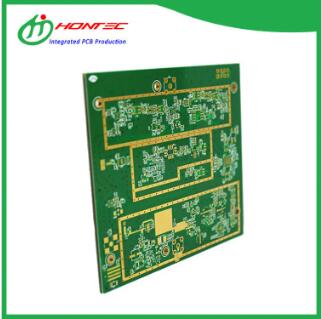Understanding the Different Types of Multilayer Board Stacks
2024-08-12
Multilayer board stacks are integral components in modern electronics, providing the necessary structure and connectivity for complex circuits. These stacks are composed of multiple layers of conductive and insulating materials, allowing for more compact and efficient designs. In this blog, we will explore the different types of multilayer board stacks and their specific applications in the electronics industry.
1. Sequential Lamination Stacks
Sequential lamination is a process where layers are added one at a time, allowing for more intricate designs and higher layer counts. This method is often used in complex circuits that require a high degree of precision. Each layer is laminated and drilled separately, and then the entire stack is bonded together in a final lamination step. Sequential lamination stacks are commonly used in high-density interconnect (HDI) boards, where space is limited, and intricate routing is required.
Applications:
- Mobile devices
- Wearable technology
- High-performance computing
2. Core-Based Multilayer Stacks
Core-based multilayer stacks start with a solid core material, such as a pre-laminated substrate, which serves as the foundation for the board. Additional layers are added symmetrically around this core. This type of stack provides a balanced structure with good mechanical stability, making it suitable for boards that require robustness and reliability.
Applications:
- Automotive electronics
- Industrial control systems
- Military and aerospace electronics
3. Build-Up Multilayer Stacks
Build-up multilayer stacks involve adding layers of dielectric material and conductive traces on top of a base layer. This process allows for the creation of very fine circuit patterns and is ideal for applications requiring high component density. Build-up technology is often used in combination with HDI techniques, providing advanced capabilities for miniaturized devices.
Applications:
- Smartphones
- Tablets
- Medical devices
4. Embedded Component Multilayer Stacks
In embedded component multilayer stacks, passive or active components, such as resistors, capacitors, or even microchips, are integrated directly into the board layers. This integration reduces the need for surface-mounted components, leading to more compact and reliable designs. These stacks are particularly advantageous in applications where space and weight are critical factors.
Applications:
- Space-constrained devices
- High-reliability systems
- Advanced communication equipment
5. Flex-Rigid Multilayer Stacks
Flex-rigid multilayer stacks combine flexible and rigid sections within the same board. This design allows for three-dimensional configurations, enabling the board to bend and fold without compromising electrical performance. Flex-rigid boards are essential in applications where flexibility and durability are required, such as in wearable devices and compact consumer electronics.
Applications:
- Wearable technology
- Automotive dashboards
- Foldable electronics
6. Microvia-Based Multilayer Stacks
Microvia technology involves the use of very small vias (holes) to connect layers within a multilayer stack. This approach allows for higher layer density and better signal integrity in high-speed applications. Microvia-based multilayer stacks are ideal for use in advanced telecommunications and computing systems where performance and space efficiency are paramount.
Applications:
- 5G communication devices
- High-speed networking equipment
- Advanced computing systems
Conclusion
The world of multilayer board stacks is diverse, with each type offering unique advantages tailored to specific applications. From the robustness of core-based stacks to the miniaturization potential of build-up and embedded component stacks, understanding these different types can help engineers and designers select the best solution for their projects. As technology continues to advance, the demand for more complex and efficient multilayer boards will only increase, driving innovation in this critical area of electronics design.



